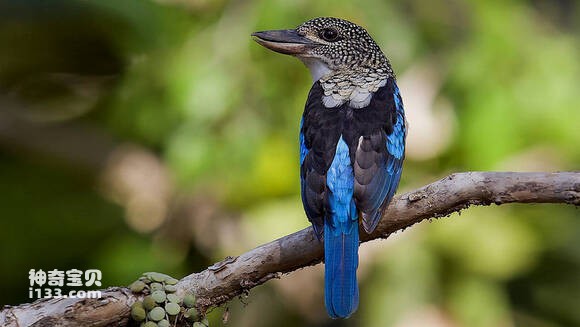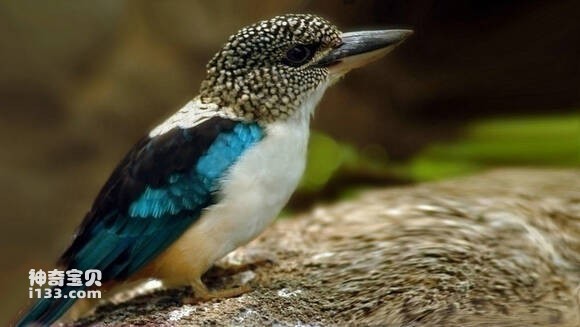Dacelo tyro
IUCN
LCBasic Information
Scientific classification
- name:Dacelo tyro
- Scientific Name:Dacelo tyro,Spangled kookaburra,Aru Giant Kingfisher
- Outline:Climbing birds
- Family:
Vital signs
- length:About 33 cm
- Weight:128-165g
- lifetime:No textual research information is available
Feature
Completely carnivorous, young birds feed primarily on insects, including beetles, ants, and insects (the latter may reach up to 12 cm).
Social habits are not known: the blue-winged Kookaburra, for example, uses a single or small group of five birds. The cape Kookaburra, like most other game kingfishers, hunts at a height of 1 to 4 meters. It hardly moves, sometimes only moving the head and tail. When it spots prey, it swoops down. Experts believe that this kingfisher has the same complex social behavior as the Australian Kookaburra, and also has nesting "helpers" (in avian society, individuals other than the parent bird help build the nest, known as "helpers"). In addition, it is often mixed with the call of the blue-winged Kookaburra, the call is very similar, making a series of "kourk" guttural sounds.
Distribution and Habitat
It is found in the Aru Islands of Indonesia and in the southern lowlands of Papua New Guinea and the Aru Islands of the southwest.
It inhabits a fertile woodland environment, riparian forests, monsoon forests, broadleaf forests, steppes, thickets in plains and thickets bordering swamps. The caped Kookaburra spends most of its time in the woods, it mainly lives within 50 km of the sea, they are a kingfisher that does not depend on the aquatic environment.
Appearance
There's a yellow line under the eye. Dark blue back with black undertones on the shoulder blades. The tail is bright cobalt blue. The tip of the tail and the two side feathers are darker. White chin and throat. The chest and abdomen are pale yellow, the wings and tail orange. The underside wings have the same color as the belly and chest, with a black tail underneath. The maxilla is black. Iris dark brown, legs gray or gray-green.
Mouth thick straight, long and firm, mouth ridge round; No nasal furrow; The wingtip is long, the first primary feathers are slightly shorter, and the third and fourth feathers are longest; Tail short round; The body feathers are showy and luminous, often blue-green. The head is large, the neck is short, the wings are short and round, and the tail is mostly short; The mouth is long and pointed, the rostrum is round and blunt, the feet are very short, the toes are thin and weak, the fourth and third toes are mostly connected, and the second toe is only
Details
The scientific name Dacelo tyro, the foreign name Spangled kookaburra, Aru Giant Kingfisher, there are two subspecies, depending on the geographical differences. The cape Kookaburra, which lives in the Aru Islands, is generally dark in color. A caped Kookaburra of New Guinea having a blue upper body and mostly white underparts with small yellowish tail feathers and a throat without a trace of feathers.

The caped Kookaburra lives on termite-hollowed trunks and nests with its beak in a hole 5 meters above the ground. The diameter of the nest ranges from 45 to 60 centimeters. Spawning dates and numbers are not known. Both sexes incubate the eggs together, but only the female birds feed the chicks。

Listed on the International Union for Conservation of Nature (IUCN) Red List Protection Level: Not Threatened (LC).
Protect wild animals and eliminate wild meat.
Maintaining ecological balance is everyone's responsibility!








